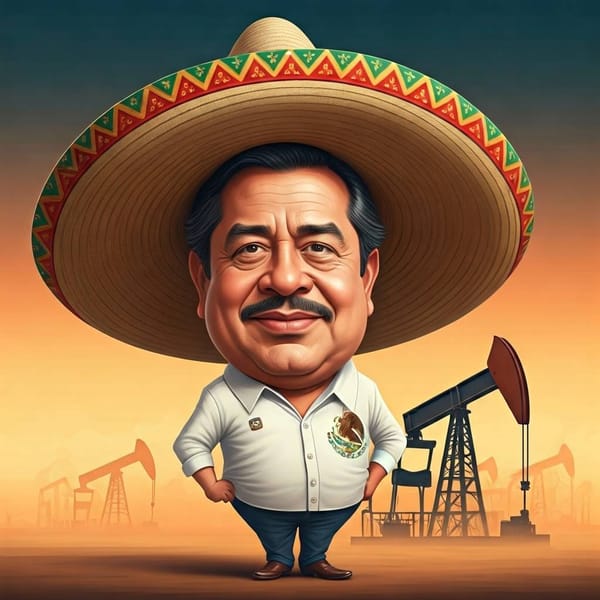The Musketeers of the Cosmos III: Isaac Newton
To learn how the physicist, philosopher, theologian, inventor, alchemist, and mathematician Isaac Newton, changed universal history, read this article.

Isaac Newton was born in Woolsthorpe, Lincolnshire, on December 25, 1642 (Julian calendar). He was a physicist, philosopher, theologian, inventor, alchemist, and mathematician. Newton is the author of the "Philosophiæ naturalis principia mathematica", better known as the Principia, where he describes the law of universal gravitation and establishes the basis of classical mechanics through the rules that bear his name.
Among Isaac Newton's other scientific discoveries are his works on the nature of light and optics (mainly presented in his work Opticks), and in mathematics, the development of infinitesimal calculus. To learn much more about Isaac Newton, who changed universal history, continue reading this article.
The historic Woolsthorpe orchard
In 1642 Galileo died while trying to build a more accurate clock for his many measurements, but the world was not orphaned of greatness, for on Christmas of the same year was born the man who could one day claim: "I now demonstrate the structure of the World System." That man took the name Isaac Newton and was born in Woolsthorpe, a small village in Lincolnshire, on the road from London to York.
He was a posthumous son born before his time; he was so small that his mother told him years later that he would fit in a jar. The young Isaac spent his early years with fear and many prejudices. To top it all, he was not very diligent, and even in class, they accused him of being absent-minded. Later, due to a fight with another outstanding student, he set out - and succeeded - to climb to the top positions. Handwritten notes from his time as a student at Trinity College reveal him to be passionate about science.
The family chronicle points out that our character's mother remarried, and the boy was educated temporarily by his grandmother; in reality, he lacked a home of his own. Somewhat in the fashion of the time, his mother wanted to prepare him to become a farmer but failed. He went to Grantham County School, where he amazed his teachers and classmates with his bizarre inventions.
The young Newton was full of ideas and would devise ways to try them out. In their biographical book, Cottler and Jaffee relate that as he did his experiments, curious questions arose in his mind that he was eager to test; for example, "How fast does the wind blow?" With youthful impetuosity, he found a means of trying it.
Putting his back in the direction of it, he leaped as far away as possible. He marked where he had arrived with the sign, "Wind direction." Then he faced the direction of the wind and jumped again "upwind." He measured eight feet and then five. He then subtracted between the two distances obtained and estimated the vigor of the air since the distances were equal when it stopped blowing.
We have already said that young Isaac was not a farmer's boy: "the weeds covered the orchard, the cattle ate the fruit, and the customers ran out." The mother and grandmother concluded that the boy was more attracted to books, finally agreeing that he should enter Trinity College at Cambridge University as a "subsizar," a category of student who served as a servant to the wealthy. He surprised his tutors by knowing more than they did about some subjects.
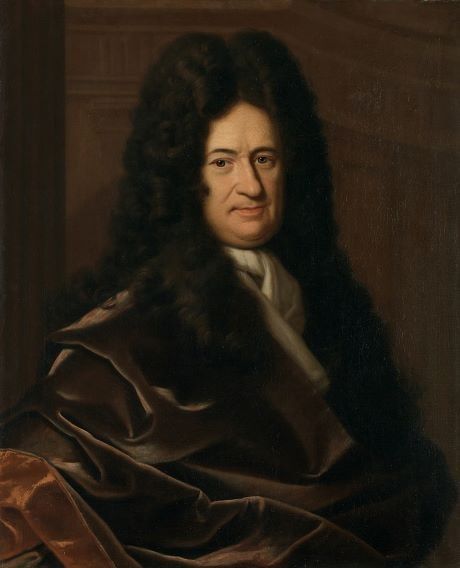
Isaac continued with his experiments and delved into astrology -as his illustrious predecessor, Kepler, had done- but soon abandoned those interests for more serious occupations. His notes at Trinity College reveal that he had already begun to analyze the colors into which light decomposes by employing a prism. He had also discovered the method of fluxions for calculating areas, analogous to the differential calculus found at the same time in Germany by Leibniz.
Both scientists had bitter discussions because they thought the discovery belonged to them. Newton did a dangerous experiment. Obsessed with light, he looked at the Sun without protection while pressing with an awl his eyeball to deform the curvature of his retina and perceive different visual sensations. He explains it to us in his notes:
In a few hours, my eyes were in such a state that I could not look at any bright object without seeing the Sun before me. So that I dared neither read nor write. Still, to recover the use of my eyes, I shut myself up in my room after dark, three days in succession, and used all means to distract my imagination.
But from these dangers came dazzling answers, so the secret of light was straightforward: the light of the Sun is a combination of the seven colors of the spectrum. When we say, for example, that grass is green, the truth is that grass returns green light out of all the colors that make up the Sun's rays. It absorbs six colors of the seven and only reflects green.
But in those days, there was something that absorbed him almost totally: mathematics and, with it, the astronomical enigmas; by elucidating them, he tried to grasp the keys to this strange world where we exist, plagued with questions. He progressed in his studies, and under the lessons of the eminent professor Isaac Barrow, in Cambridge, something memorable happened: the teacher, amazed by Isaac's brilliant dissertations, gave him his chair of mathematics, and he made it famous. Moreover, Barrow provided Newton with the ideas that would lead him to specify the infinitesimal calculus.
In 1666, at 23, Newton was studying at Cambridge when an epidemic outbreak forced him to spend a year in his hometown, a brilliant year for the annals of history. There he invented the differential and integral calculus while he elaborated his discoveries about light; as he narrates in his diary, he established the basis of the theory of universal gravitation, which gave continuity to Kepler and Galileo's questions about planetary motions.
Before continuing with the enumeration of prodigies, we must explain how he spent his days at Woolsthorpe; a servant described him thus (quote taken from Carl Sagan's Cosmos):
I never saw him practicing amusement or pastime, neither riding on horseback to take the air nor walking or bowling or any other exercise; Newton believed that any hour not devoted to his studies was a wasted hour.
But serious things were happening in the capital. Woolsthorpe's orchard had already been the scene of significant events; now, London was to be.
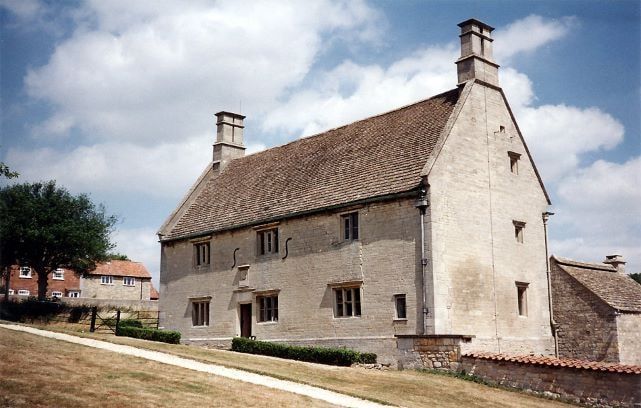
The Royal Society and a hotbed of geniuses
In 1652, the Royal Society appeared under royal auspices in London, which housed a constellation of thinkers. Around 1667 there were dark hours for the English capital. A great fire deprived the city of numerous monuments, many of which Christopher Wren, one of the most notable English architects and a close friend of Newton, later rebuilt. Wren (1632-1723) was responsible for reconstructing some 51 of the 87 buildings destroyed, and, of course, St. Paul's Cathedral stands out for its monumentality. In addition, the scientists Halley and Hooke Boyle were Newton's contemporaries.
The names mentioned above helped to fit the pieces of the immortal scaffolding that revolutionized the science of those years, all within the Royal Society of London framework. The Sprat published the history of the latter in 1667. It is worthwhile to look at the giants who accompanied Isaac Newton on his excursions into the unknown: the famous astronomer Halley, with whom he would have transcendental conversations, to which we will refer.
Also, the Irishman Robert Boyle was the first to give chemistry a modern orientation within the appropriate framework. A society called the "Invisible College" or "University without a Seat" came to be in England in the middle of the 17th century. Unanimously, the members of this learned place agreed to devote themselves to cultivating the new philosophy, the natural sciences nourished by experimentation and observation. Let us glean data from the historian Pijoan:
Supported by this group of friends, including Newton, Boyle freed chemistry from the Aristotelian dogma of the four elements, but he could not wholly emancipate himself from alchemy. However, in his first book, entitled The Skeptical Chemist, he scathingly criticized the experiments of those who continued to believe, by the ideas of Paracelsus, that salt, sulfur, and mercury were the formal elements of all things. Chemistry began then on to be an actual science.
Boyle, born in 1627, is somewhat as remarkable as Newton; both died after a long life devoted to science. At the same time, both were members of the Royal Society, the London Academy, newly founded as a sequel to the Invisible College. Boyle was Irish, son of the Duke of Cork, and possessed sufficient resources to devote himself to his scientific research. He studied in London, Leyden, Lyon, and Geneva. In 1654 Boyle settled in Oxford and founded the first modern laboratory of physics and chemistry. In the meetings with his London colleagues, he emphasized that it was necessary to break the "respect" to the Greeks and Latins...in short, Boyle is the founder of modern chemistry.
Edmund Halley, an astronomer of the time and a dear friend of Isaac Newton, discovered two nebulae, one in Centaurus and the other in Hercules. He was the first to account for the proper motion of the fixed stars. He also proved the law of distances of universal gravitation and financed the printing of Principia (Isaac Newton's major work).
He is universally known for the comet that bears his name, whose periodic appearances he predicted. Edmund Halley proposed a method for determining the parallax of Venus and, in 1701, published the first map of magnetic declination and Ptolemy's stellar catalog. He made essential studies in optics and enunciated a general formula relating the distances of the object and the lens image.
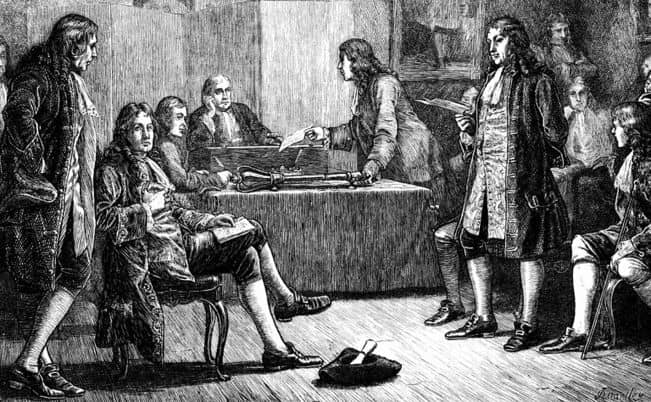
Regarding the comet that bears his name, Edmund Halley observed its transit in 1682, calculated its orbit according to Newton's method, identified it with the comet observed by Kepler in 1607, and predicted its return in 1758. The comet returned, and the time of its perihelion passage differed by only one month from the expected date.
Robert Hooke was also a brilliant member of the Royal Society. He excelled as a physicist, astronomer, and naturalist, perfecting many measuring and observation instruments. Hooke discovered the isochronism of the oscillations produced by a spring, enunciating the law on elastic deformations. He dedicated hours to the observation under the microscope -which he perfected- of different structures of plants and animals, being the introducer of the cell concept. He also invested much time in the study of fossils and the anatomy of insects.
Another outstanding member of the Royal Society was Jeremiah Horrocks. He was the first to observe the motion of the planet Venus and dedicated a large part of his scientific activity to studying the characteristics of this planet and the Moon, applying Kepler's theories. He also related the fall of bodies to the motion of the stars.
All these geniuses - Wren, Boyle, Halley, Horrocks - claimed to be ignorant; Newton himself would declare to Halley: "Our ignorance persists because we have no adequate mathematical procedure." And so he went in search of it and found it.
However, each epoch presents several obsessive problems. In physics, it was the laws of motion. Galileo had postulated that a body would move indefinitely, with uniform velocity and in a straight line, or would remain at rest if no other forces intervened to disturb it. Kepler, for his part, had discovered that the orbits of the planets were ellipses (aided by the measurements of Tycho Brahe), and the questions arose at random, the product of a curious mind.
Newton wondered, "Why is it that if we drop an object like an apple, it falls and does not rise?" And so, in Newton's mind, a sparkling answer emerged: Gravitation! And then Isaac was faced with a challenge. He had to demonstrate, with numbers, how this gravitation worked. And our man began to make calculations and to lucubrate.
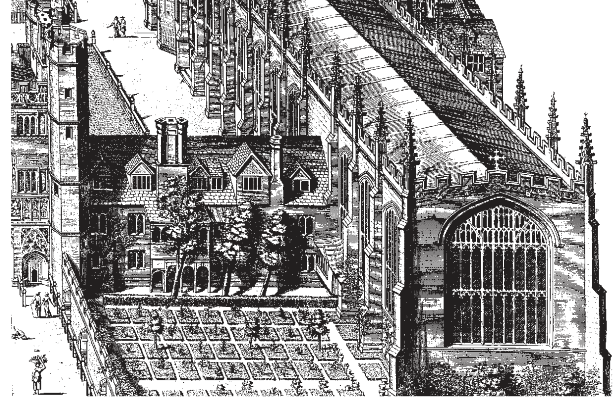
The apple, the Moon, and a mistake of Isaac Newton
Isaac Newton asked himself the question: How does gravity work? We do not know how he came up with it; tradition says that he observed the fall of an apple, but there is no evidence to that effect. When studying the orbit of the Moon, he thought that it felt the Earth's attraction and that it should decrease with distance. Quoting Newton:
Suppose the solution is the relationship between the attractive force decrease and the distance of the body that wants to attract—decreasing as the square of the space. The books tell us that the Earth has an equatorial circumference of 33 600 km, and our satellite's length is estimated at 384 400 km from center to center. According to my estimation, the Moon should take 32 days to go around our planet, but it turns out that it only takes 27 days. What is going on.."
The numbers did not add up... 20 years passed. Finally, news arrived in London from Jean Picard's expedition to Cayenne (French Guyana) with improved data indicating that the equatorial circumference was 40 000 km. In fantastic news, Newton revised his calculations two decades earlier.
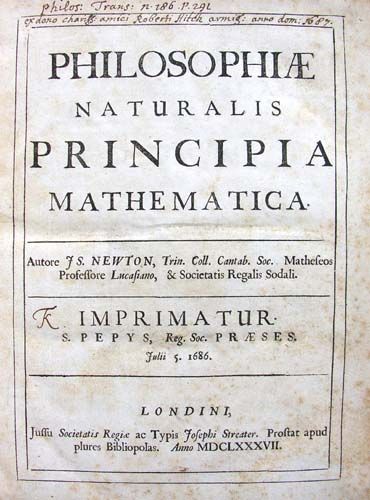
The law of universal attraction
Galileo had postulated that a body would move indefinitely, with uniform velocity and in a straight line, unless some force acting upon it. Kepler, for his part, had revealed that the orbits of the planets were ellipses. So what was the reason for the elliptical motion of the stars of the planetary system? Instead of moving in a straight line, why did they have orbits around the Sun?
Isaac Newton would answer these questions. We summarize the scenario of his discovery in four basic laws: the law of inertia, the direction of acceleration under an impressed force, the law of reciprocal action and reaction, and finally, the law of universal attraction, that is, that bodies attract each other in the direct ratio of the product of their masses and the inverse ratio of the square of their distances.
F = GMm/d²
What is the origin of this law enunciated by Newton? There is a text by Voltaire that narrates:
One day in 1666, when Newton retired to the countryside and saw fruit falling from a tree, according to what his niece (Madame Conduit) told me, he let himself a deep meditation. The cause attracting all bodies in a line, if prolonged, would pass very close to the center of the Earth. What is it, he asked himself, this force that cannot come from all those imaginary "whirlwinds" whose falsity shows?
It acts on all bodies in proportion to their masses and not to their surfaces: would it perform on the fruit that has just fallen from this tree if it were elevated, at three or ten thousand toes? The force must act in the place where is the globe of the Moon. Up to the center of the Earth. And, if the case, whatever this power may be, it can be the same that makes the planets tend towards the Sun, and the satellites of Jupiter gravitate towards Jupiter.
All the inductions obtained from Kepler's laws demonstrate that all these secondary planets gravitate towards the center of their orbits. The more so, the nearer they are, and the less so, the farther away they are. That is to say, reciprocally, according to the square of their distances. (Voltaire, Eléments de philosophie de Newton, troisieme partie, chapitre III, p.520 of t. 22 of Oeuvres completes de Voltaire, de.1879 Garni Freres (Paris, 1738).
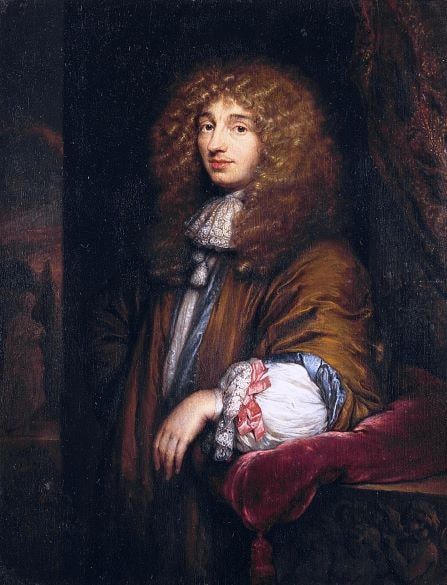
On the other hand, there is an unpublished memoir by William Stukeley that relates to the life of the eminent English scholar. Stukeley, born in 1687 and died in 1765, enjoyed Newton's friendship. In his memoir, dated 1752 and published in 1936, he highlights passages from the life of his revered friend, and of particular interest is a specific reference to the false apple. Stukeley says that on April 15, 1726, he visited Newton's country house for the whole day and adds:
After lunch, the temperature was high; he and I went to the garden, where we had tea under the shade of several apple trees. In conversation, he explained that he was in that very situation when the idea of gravity came to his mind. He then goes on with the classical reasoning about the identity of the attractive forces and ends by saying. It was the birth of those surprising discoveries with which he founded philosophy on a solid foundation, to the surprise of all of Europe.
It was undoubtedly a great event and was absorbed only after significant concessions by outstanding European intellects. Unfortunately, envy, jealousy, malice, and maledictions are a source of mischief for the most brilliant minds.
At that time, with the birth of modernity, the beginning of accepting science as a generator of proper knowledge, the religious spirit of educational philosophy was still deeply rooted. Assuming these new ideas was often tricky, especially those that opposed - or seemed to oppose - those outlined in the Scriptures.
In this way, Newton entered the concert of universal ideas, and the astronomical dimension acquired more clarity. Isaac Newton propitiated the fall of scholasticism and began the demolition of old ideas. And - to the scandal of the conservatives, again - the interpretation of the Holy Scriptures. Cautiously, Newton himself, in his book Principia, states:
It is said, allegorically, that God sees, hears, speaks, rejoices, is angry, loves, hates, desires, builds, constructs manufactures, accepts, and gives because everything of God is some comparison with human things. But these comparisons, even if very imperfect, nevertheless convey a faint idea. Here is what I had to say about God, whose work is for natural philosophy to examine.
Hitherto, I have explained the celestial phenomena and those of the sea by the force of gravitation. But I have nowhere assigned the cause of this gravitation. This force comes from some reason that penetrates the Sun's center. And the planets without losing any of their activity. It does not act absolutely according to the magnitude of the surfaces (as mechanical causes) but to the quantity of matter (meaning mass). Its action extends immense distances from all parts, decreasing the distances' double ratio.
In a sort of recapitulation Isaac Newton tells us:
The gravity towards the Sun is composed of the gravities towards each of its particles. It decreases moving away from the Sun. In the double ratio of the distances and up to the orbit of Saturn*. The proof is the rest of the aphelia of the planets. It extends up to the last aphelia of the comets if these aphelia are at rest.
I have not yet been able to deduce the reason for these properties of gravity from the phenomena, and I do not imagine hypotheses (hypotheses non-fingo). Everything not deduced from the phenomena is a hypothesis, and theories, be they metaphysical, physical, mechanical, or occult qualities, are not to be received in experimental philosophy.
*At that time, not been discovered Uranus (William Herschel, 1781), Neptune (Johann Gottfried Galle, 1846), Pluto (Cly Tombaugh, 1930).
As we can see, Newton did not like conjectures. He walked with his feet on the ground, believing that a superior being was pantheistic. But his statements in the style of the time did not like radicalism. His tombstone speaks of a philosophy that defends "the majesty of the Almighty." Newton was "on the edge of the sea... while the infinite ocean of truth offered me its unexplored immensity..."
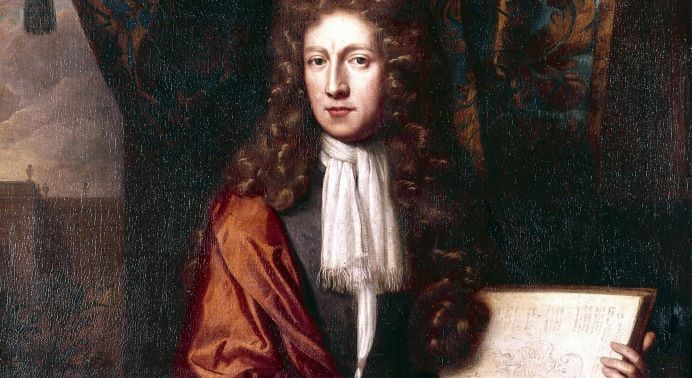
Isaac Newton's encounters and misunderstandings
It was a dazzling time for knowledge when the world was expanding at times with the advances in navigation and cartography. There were bloody wars and empires fought for their permanence, while small scientific and artistic cenacles aspired to greatness, which would reflect the centuries.
With the brilliance of Giordano Bruno and Galileo Galilei extinguished in Italy, lights were shining in Holland, Germany, France, and England. The astronomer Christiaan Huygens (1629-1695) declared, "the world is my homeland, science my religion." To achieve the exact measurement of time - an idea that tormented Galileo - he adopted his brilliant view of the pendulum. He devised the grand scheme in which it was replaced by a spiral spring, giving rise to the idea of the modern clock. Later he perfected the telescope (our Newton built another one). Among his discoveries, he discovered the rings of Saturn and the Orion nebula; these marvels feature in his book The Celestial Worlds Discovered.
Huygens and Newton met at the Royal Society of London. The environment of the first is remarkable: in Holland, under the protection of his father, Constantin, who excelled as a diplomat, writer, poet, and composer and was a close friend of the great poet John Done, whom he translated. The painter Rembrandt van Rijn captured him in some of his canvases. His son, Christiaan, did not lag behind him, judging by what Descartes once said: "I could hardly believe that a single mind could occupy itself with so many things and excel in all of them."
Isaac Newton was dazzled by Huygens to the extent that he once called him "the most elegant mathematician and the most authentic follower of the mathematical tradition of the ancient Greeks." There were different opinions about the theory of light between Newton and Huygens. Let's see. Partly on the basis that shadows have net edges, Newton thought that light behaves like a stream of tiny particles.
He thought red light was composed of larger particles and violet of smaller ones. Huygens claimed, in turn, that light behaves as if it were a wave, as an ocean wave propagates in the sea, and this is why we speak of wavelengths and frequencies of light. The wave theory of light naturally explains many properties, including diffraction, and in the following years, Huygens' idea took precedence.
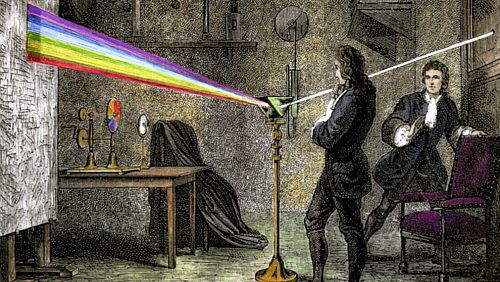
But in 1905, Einstein showed that the corpuscular theory of light could explain the photoelectric effect of the emission of electrons by metal when exposed to a beam of light. Modern quantum mechanics combines both ideas, and today it is customary to consider light as a phenomenon that, in some circumstances, behaves as a particle beam and in others as a wave. This wave-particle dualism may not quickly meet the conceptions imposed by our common sense, but it agrees very well with what light does in the experiments.
Huygens preceded the seers of science fiction such as H.G. Wells and Arthur Clarke in affirming that it seemed absurd to him that so many suns and planets were not inhabited; otherwise, he said, God would have made things for nothing. Newton had particular difficulties with Robert Hooke because, in 1672, the former dared to criticize some of his theories on the force of gravity and optics. Newton felt very offended, locked himself up in Cambridge, and renounced to publish more of his work for several years to avoid disputes.
On the other hand, Isaac Barrow and Newton felt mutual respect since they met at Cambridge University. The former carried out a study under the title Analysis per aequationes numero terminorum infinitas. This work develops explicit functions in series, extending the calculus to literal equations. It squares curves facing the case of the parabola, ellipse, and hyperbola. It is interesting to trace the invention of infinitesimal calculus. Newton took care of and published the text to which we alluded and would serve him as a platform to complete the process.
Of course, one must state that Newton's old and wise predecessor was Barrow when he introduced the discovery of the infinitesimal calculus. Our man was slow in the process of exploring the method. To say that Newton was reticent with his findings is no secret. His Universal Arithmetic is challenging to read, but this is attributable to the fact that his text is instead a succession of notes; with the criterion that "examples are more useful than precepts," he wanted to make mathematical knowledge more accessible.
Its publication is due to G. Whiston, who replaced Newton in his chair at Cambridge in 1695. Having found the original among the Lucasian Papers, Whiston thought of printing it. He said: "it was a pity that a work so noble and useful remains locked up in a college." Its date of appearance is 1707. Subsequently, there were several editions in 1712, 1722, 1728, and 1769.
Newton fuses, in his work, arithmetic with algebra, which, in his view, constitutes the science of calculus. In addition, Leibniz shares with Newton the glory of discovering infinitesimal calculus. There has been much debate over the priority of Newton or Leibniz in this matter, but, in the end, some points are clear: Newton's "secrecy" over Leibniz's more open attitude.
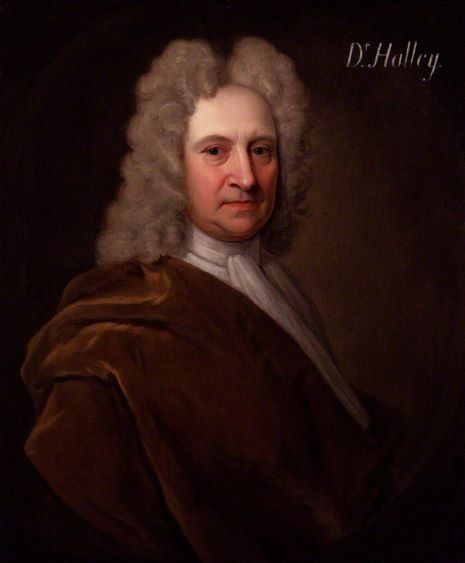
In 1655 the English mathematician Wallis published the book Aritmetica infinitorum. With his methods, we find the inauguration of the analytical approach to achieve the integration of curves and where fractional exponents appear to replace the fractions' denominators, whose applications provide mathematics, physics, and astronomy, with new bases for a complete understanding.
It is this same Wallis - who will have a notable influence on Newton - who establishes the binomial that bears his name: expressing the power of a sum as the sum of the products of the forces of the addends. Suppose (x + a)" is developed, ordered according to the decreasing powers of x. In that case, it leads to a serial development which, when the exponent is an integer and positive, has a finite number of terms.
In parallel, Newton and Leibniz worked on a method to arrive separately at the expected calculus. For years, the latter presented his results to several eminent mathematicians of the time and even exchanged letters with Newton. The result is that the infinitesimal calculus is the basis of all modern mathematical science and that the discoverers were, simultaneously, Leibniz and Newton. Master Pijoan reduces it to a few clarifying paragraphs.
First: Newton published his ideas for the calculus of fluxions in 1669, while Leibniz published his mathematical studies from 1682 to 1692.
Second: It seems proven that Leibniz could see some letters that Newton wrote on this subject and that when he went to London in 1673, he visited Newton. The latter must have communicated his mathematical discoveries to him.
Third: The method proposed by Leibniz for calculus is wholly original and much more practical and manageable than Newton's. In this matter, the man of imagination and precursor was the English scholar, while the German gave his method a functional form accessible to everyone. It was Newton himself who recognized what Leibniz had obtained; thus, there is a famous scholium in this respect, enunciated by Newton in the Principia (book ll, Lemma II), in which, in the end, he states:
"Given an equation including in any way fluent quantities, find the fluxions and vice versa, this illustrious man* replied to me that he too had found a method of this kind and communicated it to me, differing from mine only in the terms and signs, as also in the idea of the generation of the magnitudes. The fundamental principle of both is contained in this motto".
*He was referring to Leibniz.
In 1684, already Leibniz, in his book Nova methodus, did not include Newton in his discoveries. Both are, in a way, accomplices in the struggle for a priority that eventually resulted in a tie. One might ask: what would the eminent Isaac Barrow, turned theologian, think of the matter?
A child in front of the great ocean
After these brief notes about the illustrious Newton, we reach the final phase of his life, full of honors, significant positions, and products that make us think of senescence. He assumes very particular theological positions. When Leibniz died eleven years before him, Newton said he had had great satisfaction in breaking the heart of the illustrious Germanic; we have already recounted the miseries surrounding the discovery of the infinitesimal calculus.
At times Newton's life was difficult because he had problems with Hooke about the rule that the growth of gravity is inversely proportional to the square of the distance from the center, with Leibniz about the priority in infinitesimal calculus. The attitude of our genius was very fussy: he did not want clouds on his horizon. Stephen W. Hawking sentences him rancorously and says:
It was in his attitude towards Leibniz with whom he had a bitter dispute because, although Newton was correct as far as provenance was concerned, the issue was that both, because of a difference in time, had developed a branch of mathematics called calculus, which is at the basis of most of modern physics.
Isaac Barrow -a great teacher and possible inducer of some Newtonian ideas- modestly entered the intricate world of theology and manipulated endless discussions from the Royal Society while sinking into "poorly drawn" boundaries between alchemy and chemistry.
Sagan writes that there was a slow poisoning of metals in Newton caused by the systematic ingestion of small quantities of arsenic and mercury, as it was customary for chemists of the time to use the sense of taste as an analysis in ongoing processes. Nevertheless, his genius remained almost intact until the end of his days.
In 1696 he solved a so-called "unsolvable" problem posed by the Swiss mathematician Bernoulli by determining the curve connecting two points displaced laterally from each other, along which a body would fall in the shortest possible time under the sole action of gravity. Newton answered him within hours and created the calculus of variations. He wanted his discovery to remain anonymous, but Bernoulli discovered it and commented in admiration: "We know a lion by its claws."
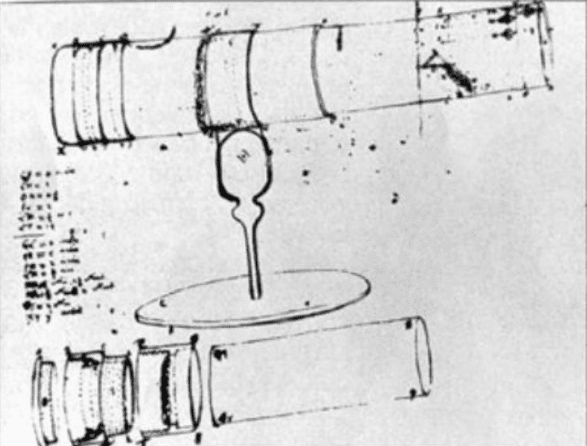
Newton became a Cambridge University representative to the English parliament in 1689 due to his election. He defended religious and civil liberty principles, but his "political career" was not very prominent. Even though there was a slight problem of insanity, later documents contradict the slander. In 1694 he was named administrator of the Mint. Upon accepting the position, he put all his "capacity, industriousness and strict probity" (Macaulay) and achieved improvements, according to experts in the field.
But alchemy is not absent in the great Newton when it is said he searches for "the elixir of life and the transmutation of metals, no more and no less than... the magician Merlin". Jocularly it has even been commented that: "...the mere rumor that the head of the Mint could transform copper pennies into brilliant gold guineas, would have sowed panic among the nations" (Cortés Pla).
In 1705 Queen Anne granted Newton the title of Sir. He continued to make discoveries; in 1717, he published his Treatise on Optics, where he speculated on the nature of color. In addition to being an amateur alchemist, he is fond of chronology and penetrates the work of historians such as Strabo and Eratosthenes. Also, at the end of his posthumous work, The Chronology of the Ancient Amended Kingdoms hypothesizes that the gods of all civilizations were nothing more than ancient kings and heroes revered by later generations.
Until our days, the echo of Sir Isaac Newton persists when Albert Einstein tackles the critical analysis of the Newtonian "absolute space" that engraves the notion of only perfect and, in turn, "absolute time" that allows the existence of the ideal clock. Thus Einstein's relativity constitutes a refinement of Newtonian mechanics to access with greater accuracy those phenomena where the classical theory falls short.
As before his teacher and friend Barrow, when Newton tackles theological questions, he becomes belittled because, as Mirabeau says, they are invaluable things. In 1727, in March, Sir Isaac Newton died and was buried, with great pomp, in Westminster Abbey, where, years later, a mausoleum rose with an epitaph that begins as follows:
Here rests Sir Isaac Newton, a gentleman. With almost divine mental strength, he first demonstrated, with his glorious mathematics, the motions and figures of the planets, the paths of comets, and the ebb and flow of the Ocean. He carefully investigated the different refrangibilities of the rays of light and the properties of the colors originating from those.
Other pomposities follow, ending with these words:
Mortals give thanks to him who has thus existed and is so great as an ornament to the human race. Born December 23, 1642, he died March 20, 1727.
Everything had begun 85 years before in an orchard, a village on the road from London to York. A legend started in Woolsthorpe, for he revealed the System of the World there. It confirmed the importance of the apple in the course of man's life on this planet.
Epilogue
With Newton, we culminate this brief journey around the four musketeers who explored the cosmos and opened paths to the knowledge of the abysmal spaces surrounding us. The gaze and intuitive wisdom are very insightful, Nicolaus Copernicus, Johannes Kepler, Galileo Galilei, and Isaac Newton. These names are an essential stairway to reach an intelligible space. These musketeers figured out the formula. When we penetrate the life of Isaac Newton, we find that his constant search resulted in the discovery of syntheses of simple truths.
Isaac Newton's struggle was continuous between rationalism and mysticism, the grandeur of the cosmos and its mechanisms, and the eternal harmony of the spheres. Keynes defined him as a monotheistic Jew of the school of Maimonides. His life was a perpetual inquiry where disappointment was the constant, where small miseries led him to envy and resentment overshadowed by his mathematical and scientific triumphs.
Author: Adolfo Hernández Muñoz. Source: Correo del Maestro, No. 30.



